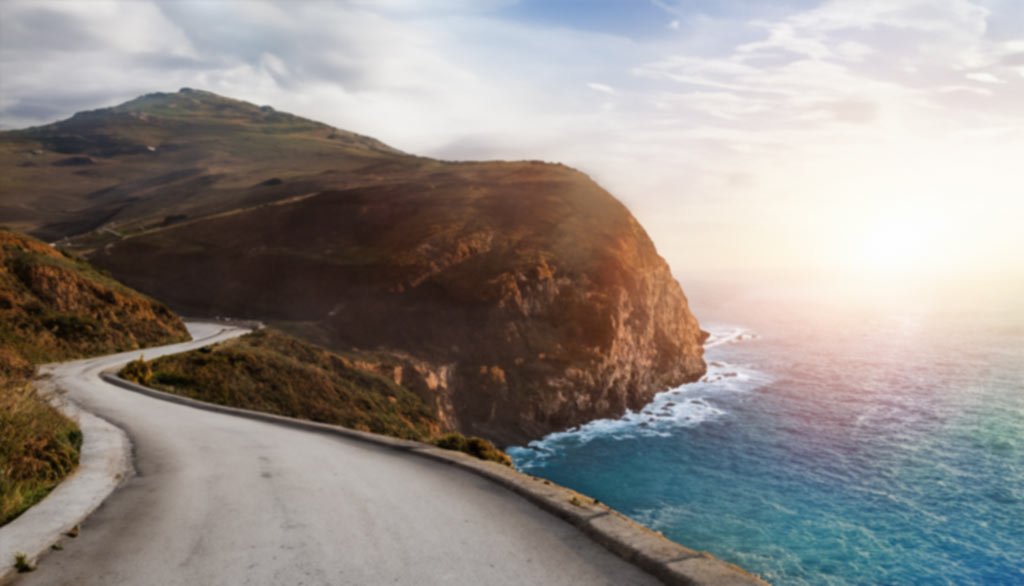Crete, the largest Greek island, is a premier destination for birdwatching lovers. It offers a wide range of habitats, from gorges to wetlands. As part of the EU Natura 2000 network, the island benefits from active conservation efforts that preserve its ecosystems and protect its biodiversity. The topography of Crete is home to birds of prey that define the natural heritage. Griffon Vultures (Gyps fulvus) and Golden Eagles (Aquila chrysaetos) command high-altitude regions like the White Mountains (Chania) and Psiloritis (Heraklion). Bonelli’s Eagles (Aquila fasciata) and Peregrine Falcons (Falco peregrinus) bring speed and precision. During peak migration seasons in spring (March) and autumn (September–November), temperatures range from 15 ℃ (59 ℉) to 25 ℃ (77 ℉), creating ideal conditions for birdwatching lovers to explore the natural wonders.
Find below a list of the top birdwatching sites in Crete.
- Aposelemis Wildlife Refuge. Aposelemis Wildlife Refuge is a wetland ecosystem with riverbanks, coastal vegetation, and marked trails for birdwatching. Birds such as Griffon Vultures, Eleonora’s Falcons, and Squacco Herons are frequently observed.
- Agia (Ayia) Reservoir. Agia Reservoir is a freshwater wetland supporting over 200 bird species, including raptors and waterfowl. Marsh Harriers, Lesser Spotted Eagles, and Purple Herons are commonly spotted during migration.
- Kourtaliotiko Gorge. Kourtaliotiko Gorge features limestone cliffs and caves that serve as nesting sites for raptors. Bearded Vultures, Griffon Vultures, and Bonelli’s Eagles dominate the sky.
- Frangokastello. Frangokastello’s wetlands and coastal plains attract resident and migratory birds throughout the year. Common Buzzards, Kestrels, and Little Egrets are frequently seen near the castle ruins.
- Preveli Beach. Preveli Beach has a unique ecosystem with a palm grove, river delta, and wetlands, supporting various bird species. Raptors like Eleonora’s Falcons and small songbirds such as Nightingales thrive here.
- Georgioupolis Lake. Georgioupolis Lake is a vital stopover for migratory birds, featuring reedbeds and marshes. Marsh Harriers, Grey Herons, and Black-winged Stilts can be observed throughout the seasons.
- Kournas Lake. Lake Kournas is Crete’s only natural freshwater lake, attracting both resident and migratory birds. Common Buzzards, Marsh Harriers, and Cormorants are regularly seen along the shoreline.
- Bramiana Reservoir. Bramiana Reservoir is a major wetland habitat home to over 218 recorded bird species. Eleonora’s Falcons, Glossy Ibises, and Ferruginous Ducks are key highlights.
- Psiloritis Mountain. Psiloritis Mountain, Crete’s highest peak, is home to large raptors and high-altitude species. Golden Eagles, Bearded Vultures, and Alpine Choughs nest in its rocky landscapes.
- Potami Dam Reservoir. Potami Dam Reservoir is a protected wetland that supports diverse waterfowl and birds of prey. Grey Herons, Flycatchers, and Kestrels are frequently observed along the reservoir’s edges.
1. Aposelemis Wildlife Refuge (Heraklion)
Aposelemis Wildlife Refuge is located in Αποσελέμης 700 14, Greece, near the mouth of the Aposelemis River and Aposelemis Beach. The refuge is along the coastline, wetlands, and the river bordering it, with marked trails and observation points ideal for birdwatching and nature photography. Visitors can reach the site with a 20–25-minute drive from Heraklion International Airport (HER), covering 20 kilometers (12 miles).
Aposelemis Wildlife Refuge’s habitat includes wetlands, riverbanks, and coastal vegetation that support an ecosystem of migratory birds, resident species, small mammals, and plants. Accommodations near the refuge include Stella Island Luxury Resort & Spa and Stella Village Seaside Hotel. Birds of prey observed in Aposelemis Wildlife Refuge include Griffon Vultures (Gyps fulvus), Eleonora’s Falcons (Falco eleonorae), Common Buzzards (Buteo buteo), and Kestrels (Falco tinnunculus). Other bird species spotted in the area include small birds like Reed Warblers (Acrocephalus scirpaceus) and Yellow Wagtails (Motacilla flava), as well as larger birds such as Squacco Herons (Ardeola ralloides) and Black-winged Stilts (Himantopus himantopus).
Aposelemis Wildlife Refuge is part of the Natura 2000 network. The best times to visit for birdwatching are spring (March to May) and autumn (August to October) when migratory birds are highly active. Resident birds can be seen year-round on the south coast of Crete, while wintering species are present from November to March. Breeding activity reaches its peak in late spring.
2. Agia (Ayia) Reservoir (Chania)
Agia Reservoir, or Lake Agia, is located near the village of Agia, 10 kilometers (6 miles) southwest of Chania, and 27 kilometers (18 miles) from Chania International Airport (CHQ) in Crete, Greece. The reservoir is now a vital wetland habitat and part of the Natura 2000 network. Visitors can also take a bus to Chania city center, a taxi, or another bus to the reservoir. The habitat around Agia Reservoir includes reedbeds, riparian woodlands with willows and plane trees, and aquatic vegetation. These ecosystems support over 200 bird species, making the reservoir one of Crete’s top bird watching destinations.
Birds of prey observed at Agia Reservoir include Eleonora’s Falcons (Falco eleonorae), Marsh Harriers (Circus aeruginosus), and Common Buzzards (Buteo buteo). Both resident and migratory birds of prey are present, with rare sightings of Lesser Spotted Eagles (Clanga marina). Other bird species include small birds like Reed Warblers (Acrocephalus scirpaceus) and Sedge Warblers (Acrocephalus schoenobaenus), as well as large birds like Purple Herons (Ardea purpurea) and Ferruginous Ducks (Aythya nyroca).
The best times to visit Agia Reservoir for birdwatching are spring (March to May) and autumn (September to October) when migratory birds are most active. Birdwatching is possible year-round due to resident species while wintering birds arrive between November and March. Breeding activity peaks in late spring, offering excellent opportunities for observation.
3. Kourtaliotiko Gorge (Rethymno)
Kourtaliotiko Gorge is located in southern Crete, Greece, 22 kilometers (13.67 miles) south of Rethymno, near the village of Koxare. The Kourtaliotis River carves this 3-kilometer-long (1.86 miles) gorge and lies between the Kouroupa and Xiron mountains, eventually leading to Preveli Beach. It features limestone cliffs, caves, waterfalls, and vegetation, making it an ecologically significant site. Traveling to Kourtaliotiko Gorge from Heraklion Airport involves a drive of 104 kilometers (65.24 miles), taking 1.5 hours, or a bus ride to Rethymno followed by a taxi or car rental for the remaining 25 kilometers (15.53 miles). From Chania Airport, the drive is 80 kilometers (49.71 miles) and takes 1.5 hours.
Accommodations near Kourtaliotiko Gorge include hotels in Plakias and Preveli, such as Elena Rooms and Alianthos Garden Hotel. Dining options in these areas serve local cuisine, and restroom facilities are available within accommodations or nearby locations. The gorge is part of the Natura 2000 network and is designated as a wildlife refuge (Katafygio Agrias Zois), highlighting its conservation value.

Birds of prey commonly observed in the Kourtaliotiko Gorge include Griffon Vultures (Gyps fulvus), Bearded Vultures (Gypaetus barbatus), and Bonelli’s Eagles (Aquila fasciata). Both standard and rare raptors use the area for nesting and foraging. Other avian species include small birds like Sardinian Warblers (Sylvia melanocephala) and large birds such as Crag Martins (Ptyonoprogne rupestris). The best time to visit Kourtaliotiko Gorge is during spring (April to June) or autumn (September to November), when migratory birds are active, temperatures are mild, and waterfalls are most impressive due to winter rains. Resident birds can be seen yearly while breeding activity peaks in late spring.
4. Frangokastello (Chania)
Frangokastello is a village on the south coast of Crete, Greece, 14 kilometers (8.08 miles) east of Chora Sfakion and 80 kilometers (49.71 miles) southeast of Chania. It is known for its Venetian castle, constructed between 1371 and 1374, and its sandy beaches with shallow turquoise waters. The area features a variety of beaches, such as Orthi Ammos and Vatalos, and wetlands that form during the winter. Travelers can reach Frangokastello from Chania International Airport (CHQ) by car, taking a drive through the Askyfou Plateau and Imbros Gorge, covering 90 kilometers (55.92 miles) in 1.5 to 2 hours.
The surrounding habitat in Frangokastello includes coastal wetlands, dunes, and Mediterranean scrubland. These wetlands attract migratory birds during winter and spring, while the coastal plains support small mammals and reptiles. Visitors can stay in beachfront accommodations like Blue Sky and Dolphin Apartments or family-run hotels like Monachus Monachus.
Birds of prey in Frangokastello include Griffon Vultures (Gyps fulvus), Common Buzzards (Buteo buteo), and Kestrels (Falco tinnunculus), with a mix of resident and migratory species. Other birds include small species such as Sardinian Warblers (Curruca melanocephala) and Crested Larks (Galerida cristata), alongside larger birds like Little Egrets (Egretta garzetta) and Purple Herons (Ardea purpurea).
The best time for birdwatching in Frangokastello is spring (March to May) or autumn (September to October) for migratory birds. Resident birds are visible year-round, breeding activity peaks in late spring, and wintering species are present from November to March. Temperatures during spring and autumn are mild, typically between 15 ℃ (59 ℉) to 25 ℃ (77 ℉).
5. Preveli Beach (Rethymno)
Preveli Beach is located on the southern coast of Crete in Agios Vasilios, 33 kilometers (22 miles) south of Rethymno and 10 kilometers (6 miles) east of Plakias. The beach lies at the mouth of the Kourtaliotiko Gorge. Key features of Preveli Beach include a rare palm grove, a lagoon, and a distinctive heart-shaped rock to the east. Visitors can reach the beach via a 15–20 minute hike from the parking area near Preveli Monastery or a shorter walk from Drimiskiano Ammoudi Beach. Traveling to Preveli Beach from Heraklion Airport (HER) takes 1.5 to 2 hours by car. The drive from Chania Airport (CHQ) is 1 hour and 40 minutes.
The surrounding habitat of Preveli Beach includes a rare palm forest along the riverbanks, Mediterranean scrubland, wetlands, freshwater pools, and rocky cliffs. The palm grove, one of Crete’s last, has regenerated well after a fire in 2010. Preveli Beach is part of the Natura 2000 network and is recognized for its biodiversity and ecological value. The best time to visit Preveli Beach for birdwatching is spring (March to May) and autumn (September to October), when migratory birds are most active. Resident birds can be seen yearly, with breeding activity peaking in late spring.
Birds of prey found at Preveli include Griffon Vultures (Gyps fulvus) and Eleonora’s Falcons (Falco eleonorae), representing both resident and migratory species. Other notable birds include small species like Nightingales (Luscinia megarhynchos) and Flycatchers (Muscicapa striata), along with larger birds such as Squacco Herons (Ardeola ralloides) and Great Reed Warblers (Acrocephalus arundinaceus).
6. Georgioupolis Lake (Chania)
Georgioupolis Lake, also known as Almyros Lake, is located just south of Georgioupolis village in the Apokoronas region of Crete, Greece. It lies 40 kilometers (25 miles) east of Chania and 21 kilometers (13 miles) west of Rethymno, near the Almyros River and the Libyan Sea. The lake features a bridge that serves as a viewing point, while the nearby village of Georgioupolis features sandy beaches and a harbor. Traveling to Georgioupolis Lake from Chania International Airport (CHQ) takes 45 minutes by car. Public buses frequently connect Chania to Georgioupolis, with a journey time of 1 hour and 10 minutes. The drive from Heraklion Airport (HER) is 1.5 hours.
The Georgioupolis Lake habitat includes freshwater wetlands, reedbeds, and coastal marshes. These areas are in wildlife, hosting fish, amphibians, and various bird species. The lake serves as a vital stopover for migratory birds and a breeding ground for waterfowl. Georgioupolis Lake is part of the Natura 2000 network, highlighting its ecological importance. Visitors can find accommodations in Georgioupolis, with options like the Mare Boutique Hotel and Georgioupolis Beach Hotel.
Birds of prey at Georgioupolis Lake include Common Buzzards (Buteo buteo) and Kestrels (Falco tinnunculus), both resident species. Migratory birds of prey, such as Marsh Harriers (Circus aeruginosus), are observed during migration seasons. Other notable birds include small species like Reed Warblers (Acrocephalus scirpaceus) and larger species such as Grey Herons (Ardea cinerea) and Black-winged Stilts (Himantopus himantopus). The best time for birdwatching in Georgioupolis is during spring (March to May) and autumn (September to October), when migratory birds are most active. Resident birds are visible year-round, and wintering species arrive between November and March.
7. Kournas Lake (Chania)
Lake Kournas, the only natural freshwater lake in Crete, is located in the Apokoronas municipality of Chania, 42 kilometers (28 miles) east of Chania and 27 kilometers (15 miles) west of Rethymno. It is located near the village of Kournas, 4 kilometers (2.5 miles) from Georgioupolis, and lies at the base of the White Mountain. Natural springs feed the lake, which forms small sandy beaches in summer when water levels drop. Reaching Lake Kournas from Chania International Airport (CHQ) requires a 50-minute drive along the National Road (E75) toward Rethymno, exiting at Georgioupolis. Public buses connect Chania to Georgioupolis, followed by a short taxi ride or walk to the lake.
The habitat around Lake Kournas includes wetlands, reedbeds, and Mediterranean vegetation, supporting diverse wildlife. The lake is home to eels, terrapins, water snakes, and various bird species. Lake Kournas is part of the Natura 2000 network, emphasizing its ecological significance as a protected area. Nearby accommodations include hotels in Georgioupolis, such as Pilot Beach Resort and Anemos Luxury Grand Resort. Traditional tavernas and cafes near the lake offer local cuisine, refreshments, and basic amenities, including restrooms.
Birds of prey observed at Lake Kournas include Common Buzzards (Buteo buteo) and Kestrels (Falco tinnunculus). Migratory birds of prey, such as Marsh Harriers (Circus aeruginosus), are occasionally spotted during migration seasons. Other bird species include small birds like Reed Warblers (Acrocephalus scirpaceus) and large birds such as Cormorants (Phalacrocorax carbo) and Grey Herons (Ardea cinerea). Ducks and Moorhens are frequent residents of the lake. The best time to visit Lake Kournas for birdwatching is spring (March to May) and autumn (September to October), when migratory birds are active. Resident birds can be seen year-round, and wintering species arrive between November and March.
8. Bramiana Reservoir (Lassithi)
Bramiana Reservoir, the largest artificial lake in Crete, is located 5 kilometers (3 miles) northwest of Ierapetra in the Lasithi region. The reservoir spans 1,050 acres and provides a critical habitat for migratory birds and other wildlife. Reaching Bramiana Reservoir from Heraklion Airport (HER) takes 1.5 hours by car, 94 kilometers (58 miles) via Agios Nikolaos and Ierapetra. Public buses connect Heraklion to Ierapetra, where a short taxi ride leads to the reservoir. The drive to Bramiana Reservoir from Sitia Airport (JSH) is 1 hour.
The habitat around Bramiana Reservoir includes freshwater wetlands, reedbeds, tamarisks, and Mediterranean vegetation. Bramiana Reservoir is a Natura 2000 site, emphasizing its ecological importance as a wetland with over 218 recorded bird species. Nearby accommodations are found in Ierapetra, such as Ioanna Seaside Apartments and other local guesthouses. Restaurants and cafes in the town serve traditional Cretan cuisine. Facilities at the reservoir include parking and observation points, but amenities are otherwise limited.
Birds of prey frequently seen at Bramiana Reservoir include Eleonora’s Falcon (Falco eleonorae), Red-footed Falcon (Falco vespertinus), and Common Buzzard (Buteo buteo). Other bird species observed at the reservoir include small birds like Reed Warblers (Acrocephalus scirpaceus) and large birds such as Black-winged Stilts (Himantopus himantopus), Glossy Ibises (Plegadis falcinellus), and Ferruginous Ducks (Aythya nyroca). The wetlands attract a diverse array of waterfowl and migratory species. The best time to visit Bramiana Reservoir for birdwatching is spring (March to May) and autumn (September to October), when migratory birds are most active. Resident birds can be observed year-round, and wintering waterfowl arrive from November to March.
9. Psiloritis Mountain (Heraklion)
Psiloritis Mountain, also known as Mount Ida, is the highest mountain in Crete, Greece, standing at 2,456 meters (8,058 feet). The mountain is part of the Psiloritis UNESCO Global Geopark, which spans 1,200 square kilometers (463.32 square miles) and encompasses diverse landscapes, including gorges, caves, plateaus, and forests. The Nida Plateau, located to the east, serves as a key starting point for hiking trails, including the E4 European long-distance path. Reaching Psiloritis from Heraklion International Airport (HER) requires 1.5 hours by car to access the Nida Plateau or other trailheads.
The habitat around Psiloritis Mountain is varied, with Mediterranean forests of cypress and pine, alpine zones with thorny shrubs, and endemic plants like Cretan cyclamen and orchids. The mountain supports amphibians, reptiles, and rare mammals, including the Cretan wildcat. Nearby accommodations include Delina Mountain Resort near Anogeia and guesthouses in surrounding villages.
Birds of prey frequently seen on Psiloritis Mountain include Griffon Vultures (Gyps fulvus), Bearded Vultures (Gypaetus barbatus), Golden Eagles (Aquila chrysaetos), and Common Buzzards (Buteo buteo). These raptors include both resident and migratory species. Other bird species include small birds such as Sardinian Warblers (Curruca melanocephala) and larger species like Bonelli’s Eagles (Aquila fasciata) and Alpine Choughs (Pyrrhocorax graculus). The best time for birdwatching on Mount IDA Psiloritis is during spring (March to May) and autumn (September to October), when migratory birds are active. Resident species are visible year-round, with breeding activity peaking in late spring.
10. Potami Dam Reservoir (Rethymno)
Potami Dam Reservoir, located in the Amari Valley, 25 kilometers (15 miles) south of Rethymno, Crete, is an artificial lake created in 2008. The reservoir has become one of the southeastern most important wetlands. Well-maintained roads lead to the site, with observation points and walking paths offering views of the reservoir and its surroundings. Reaching Potami Dam Reservoir from Heraklion International Airport (HER) takes 1.5 hours by car via the National Road to Rethymno, continuing south toward Amari.
The habitat of Potami Dam Reservoir includes wetlands, reedbeds, and Mediterranean vegetation, supporting diverse bird species, including waterfowl and migratory birds. Nearby accommodations include lodging in Rethymno or villages like Amari, with guesthouses like Amari Villas and traditional tavernas offering local cuisine. Potami Dam Reservoir is part of the Natura 2000 network, emphasizing its ecological importance as a wetland that supports biodiversity.
Birds of prey commonly seen at Potami Dam include Common Buzzards (Buteo buteo) and Kestrels (Falco tinnunculus), along with migratory species like Marsh Harriers (Circus aeruginosus). Other bird species include small birds such as Flycatchers (Muscicapa striata) and large birds like Grey Herons (Ardea cinerea) and Ferruginous Ducks (Aythya nyroca). The reservoir provides habitats for both resident and migratory species year-round. The best time to visit Potami Dam Reservoir for birdwatching is during spring (March to May) and autumn (September to October) when migratory birds are most active. Resident species are present throughout the year while wintering waterfowl arrive between November and March.
What are the top Birdwatching sites in Heraklion?
Heraklion, Crete, is home to diverse birdwatching sites attracting resident and migratory bird species. During peak migration seasons in spring and autumn, temperatures range from 15 ℃ (59 ℉) to 25 ℃ (77 ℉). Each site near Heraklion offers ecosystems, conservation importance, and opportunities for bird lovers to explore.
- Aposelemis River and Dam. Aposelemis River and Dam is located 25 kilometers (15.53 miles) east of Heraklion near Kato Gouves. The river features wetlands, reedbeds, and riparian vegetation and is part of the Natura 2000 network. Birds of prey commonly seen here include Common Buzzards (Buteo buteo), Griffon Vultures (Gyps fulvus), and Marsh Harriers (Circus aeruginosus). Smaller birds like Reed Warblers (Acrocephalus scirpaceus) and larger species such as Purple Herons (Ardea purpurea) and Greater Flamingos (Phoenicopterus roseus) are also observed. The best time to visit is spring and autumn for migratory species, though resident birds are visible year-round.
- Gouves Lagoons. Gouves Lagoons is located 17 kilometers (12.43 miles) east of Heraklion near Kato Gouves. The lagoons are surrounded by fields and host wading birds, waterfowl, and passerines. Birds of prey include Kestrels (Falco tinnunculus) and Hobbies (Falco subbuteo), with occasional sightings of rare raptors like Montagu’s Harrier (Circus pygargus). Other birds include small species like Short-toed Larks (Calandrella brachydactyla) and larger birds such as Squacco Herons (Ardeola ralloides) and Black-winged Stilts (Himantopus himantopus). Migration seasons in spring and autumn are the best times to visit.
- Rouvas Gorge and Lake Votamos. Rouvas Gorge and Lake Votamos are located near Zaros village, 45 kilometers (27.96 miles) southwest of Heraklion. The site combines gorges, dense forests, and freshwater ecosystems with a Natura 2000 protected area. Birds of prey include Golden Eagles (Aquila chrysaetos) and Bonelli’s Eagles (Aquila fasciata), both rare raptors in Crete. Smaller birds, such as Sardinian Warblers (Curruca melanocephala,) and larger species, like Cormorants (Phalacrocorax carbo) and Grey Herons (Ardea cinerea,) are frequently observed. Spring is ideal for breeding species, while autumn is best for migratory birds.
- Faneromeni Dam. Faneromeni Dam is located 55 kilometers (34.18 miles) south of Heraklion near Galia village. The site is protected under the Natura 2000 network for waterfowl and stopovers for migratory species. Birds of prey include Eleonora’s Falcons (Falco Eleonorae) and Red-footed Falcons (Falco vespertinus). Other species include smaller birds like Pied Flycatchers (Ficedula hypoleuca) and larger birds such as Grey Herons (Ardea cinerea) and Glossy Ibises (Plegadis falcinellus). Visit during spring for migratory birds or winter for waterfowl.
- Asterousia Mountains. Asterousia Mountains is located 57 kilometers (35.07 miles) south of Heraklion. The site is a Natura 2000 protected area and features cliffs, gorges, and sparse vegetation, making it ideal for raptors and mountain bird species. Birds of prey include Bearded Vultures (Gypaetus barbatus), Griffon Vultures (Gyps fulvus), and Bonelli’s Eagles (Aquila fasciata), alongside other species like Rüppell’s Warblers (Sylvia rueppelli), Alpine Swifts (Apus melba), and Choughs (Pyrrhocorax pyrrhocorax). Spring through autumn is the best time to observe resident and migratory raptors.
What are the top Birdwatching sites in Chania?
Chania, located in western Crete, is a prime destination for birdwatching lovers. Its variety of habitats, from wetlands to gorges and freshwater lakes, supports many bird species, including residents, migratory birds, and rare raptors.
- Agia Lake. Agia Lake is located 10 kilometers (5.59 miles) west of Chania near the village of Agia. The lake is surrounded by reedbeds, open water, and scrubland. It is protected under the Natura 2000 network, which attracts birds of prey such as European Honey-buzzards (Pernis apivorus), Common Buzzards (Buteo buteo), and Marsh Harriers (Circus aeruginosus). Other birds include small species like Sedge Warblers (Acrocephalus schoenobaenus) and larger species like Purple Herons (Ardea purpurea) and Ferruginous Ducks (Aythya nyroca). The best times to visit are during spring (April–May) and autumn (September–October) migrations.
- Maronis Reserve and Souda Bay. Maronis Reserve and Souda Bay are located 5 kilometers (3.73 miles) east of Chania. Souda Bay features salt marshes, mudflats, and shallow waters that attract waders and coastal birds. The lake is part of the Natura 2000 network, and the reserve protects species like Ospreys (Pandion haliaetus) and Marsh Harriers (Circus aeruginosus), both migratory birds of prey. Other species include small birds like Little Ringed Plovers (Charadrius dubius) and larger species such as Greenshanks (Tringa nebularia) and Common Sandpipers (Actitis hypoleucos). Spring and autumn migrations offer the best birdwatching opportunities.
- Gorge Mesavlion – Deliana. Gorge Mesavlion – Deliana is located 44 kilometers (29.99 miles) southwest of Chania near Deliana village. It is a Natura 2000 protected area and provides critical nesting sites for raptors, including Griffon Vultures (Gyps fulvus), Bonelli’s Eagles (Aquila fasciata), and Kestrels (Falco tinnunculus). Smaller birds, such as Sardinian Warblers (Curruca melanocephala), and larger birds, like Alpine Swifts (Apus melba,) are also present. Raptors are most active during spring through autumn, making it an ideal time to visit.
- Lake Kournas. Lake Kournas lies 42 kilometers (27.96 miles) east of Chania, on the border between the Chania and Rethymno regions. The lake is Natura 2000 and home to birds of prey like Common Buzzards (Buteo buteo) and Marsh Harriers (Circus aeruginosus), as well as small birds like Reed Warblers (Acrocephalus scirpaceus) and larger species such as Cormorants (Phalacrocorax carbo) and Grey Herons (Ardea cinerea). The best times to visit Lake Kournas are during spring (March-May) and autumn (September–November) migrations.
- Georgioupolis Lake. Georgioupolis Lake is located 42 kilometers (26.61 miles) east of Chania near Georgioupolis village. Birds of prey such as Marsh Harriers (Circus aeruginosus) and Kestrels (Falco tinnunculus) are commonly seen, alongside small birds like Great Reed Warblers (Acrocephalus arundinaceus) and larger species such as Black-winged Stilts (Himantopus himantopus) and Kingfishers (Alcedo atthis). Migratory species in Georgioupolis Lake are most active during spring (March-May) and autumn (September–November).
What are the top Birdwatching sites in Rethymno?
Rethymno, central Crete, contains ecologically important birdwatching sites with diverse species, including raptors and waterfowl. These gorges, wetlands, and valleys provide ideal settings for year-round birdwatching, with peak seasons in spring and autumn offering temperatures of 15 ℃ (59 ℉) to 25 ℃ (77 ℉).
- Kourtaliotiko Gorge. Kourtaliotiko Gorge is located 25.2 kilometers (15.66 miles) south of Rethymno near Koxare. The 3-kilometre-long (1.86 miles) gorge, carved by the Kourtaliotis River, features limestone cliffs, caves, and riparian vegetation. Protected under the Natura 2000 network, the gorge supports a variety of bird species, including Griffon Vultures (Gyps fulvus), Bearded Vultures (Gypaetus barbatus), Bonelli’s Eagles (Aquila fasciata), Blue Rock Thrushes (Monticola solitarius), Alpine Swifts (Apus melba), and Crag Martins (Ptyonoprogne rupestris). Spring through autumn is the best time for observing raptors and migratory birds.
- Potami Dam Reservoir. Potami Dam Reservoir is located 22 kilometers (13.67 miles) southeast of Rethymno near Voleones in the Amari Valley. It is protected by Natura 2000 and supports Marsh Harriers (Circus aeruginosus), Common Buzzards (Buteo buteo), Reed Warblers (Acrocephalus scirpaceus), Grey Herons (Ardea cinerea), and Ferruginous Ducks (Aythya nyroca). Spring and autumn migrations are ideal, and winter waterfowl observation opportunities are available.
- Plakias Area. Plakias Area is located 34 kilometers (21.13 miles) south of Rethymno near Plakias village. The area includes coastal wetlands, cliffs, and gorges like Kotsifou Gorge. It is part of Natura 2000, it supports Eleonora’s Falcons (Falco eleonorae), Griffon Vultures (Gyps fulvus), Montagu’s Harriers (Circus pygargus), Sardinian Warblers (Curruca melanocephala), Squacco Herons (Ardeola ralloides), and Rock Doves (Columba livia). Birdwatching is best in spring (April–May) and autumn (September–November).
- Preveli Beach and Monastery. Preveli Beach and Monastery, located 32 kilometers (19.88 miles) south of Rethymno, features a palm forest, sandy dunes, riparian wetlands, and the Megalopotamos River. Protected under Natura 2000, it provides habitat for birds like Griffon Vultures (Gyps fulvus), Common Buzzards (Buteo buteo), Nightingales (Luscinia megarhynchos), Grey Herons (Ardea cinerea), and Golden Orioles (Oriolus oriolus). Spring (March- May) is ideal for observing breeding species, while autumn is best for migratory birds.
- Platania Gorge. Platania Gorge is located 36 kilometers (22.37 miles) southeast of Rethymno in the Amari Valley, which combines rocky cliffs, caves, streams, and Mediterranean vegetation. It is a Natura 2000 site and part of the Psiloritis UNESCO Global Geopark. The gorge supports Bearded Vultures (Gypaetus barbatus), Golden Eagles (Aquila chrysaetos), Kestrels (Falco tinnunculus), Cetti’s Warblers (Cettia cetti), Alpine Swifts (Apus melba), and Ravens (Corvus corax). Birding occurs year-round, with spring being optimal for breeding observations.
What are the top Birdwatching sites in Lassithi?
Lassithi, the easternmost region of Crete, provides birdwatching opportunities with its diverse habitats, ranging from wetlands and reservoirs to gorges and salt pans. These locations support various bird species, including resident raptors, migratory birds, and waterfowl, making it a haven for birding lovers.
- Bramiana Reservoir. Bramiana Reservoir is the largest reservoir, 9.5 kilometers (5.9 miles) southeast of the Lassithi Plateau. It is part of the Natura 2000 network and home to birds of prey like Eleonora’s Falcons (Falco eleonorae), Red-footed Falcons (Falco vespertinus), and Common Buzzards (Buteo buteo). Other species include small birds like Reed Warblers (Acrocephalus scirpaceus) and larger birds such as Black-winged Stilts (Himantopus himantopus) and Glossy Ibises (Plegadis falcinellus). The best times to visit are spring (March) and autumn (September–November) for migratory species.
- Zakros Gorge. Zakros Gorge, also known as the “Gorge of the Dead,” lies 81 kilometers (50.33 miles) east of the Lassithi Plateau. It is protected under the Natura 2000 network, the gorge is home to Griffon Vultures (Gyps fulvus), Bonelli’s Eagles (Aquila fasciata), and Peregrine Falcons (Falco peregrinus). Smaller birds, like Sardinian Warblers (Curruca megalocephaly), and larger birds, such as Alpine Swifts (Apus melba), are also observed. Spring through autumn is ideal for resident raptors and migratory species to visit.
- Thripti Birdwatching Site. Thripti Birdwatching Site is located 45 kilometers (27.96 miles) southeast of the Lassithi Plateau. It is part of the Natura 2000 network and supports Golden Eagles (Aquila chrysaetos), Bearded Vultures (Gypaetus barbatus), and Kestrels (Falco tinnunculus). Small birds like Blue Rock Thrushes (Monticola solitarius) and larger birds like Ravens (Corvus corax) are commonly seen. This site is suitable for year-round birding, with spring (March-May) being the best season for observing the breeding activity.
- Elounda Salt Pans. Elounda Salt Pans is located 25 kilometers (15.53 miles) northeast of the Lassithi Plateau. It has shallow pools bordered by scrubland that attract waders and shorebirds, especially during migration. The area hosts birds of prey such as Marsh Harriers (Circus aeruginosus) and Ospreys (Pandion haliaetus). Other species include small birds like Willow Warblers (Phylloscopus trochilus) and larger birds such as Greater Flamingos (Phoenicopterus roseus) and Curlew Sandpipers (Calidris ferruginea). The best times to visit are during spring (March- May) and autumn (September–November) migrations.
- Ha Gorge. Ha Gorge is located 23 kilometers (14.29 miles) southeast of the Lassithi Plateau near Vasiliki village. It is a Natura 2000 protected site and is home to Bearded Vultures (Gypaetus barbatus), Griffon Vultures (Gyps fulvus), and Common Buzzards (Buteo buteo). Smaller birds like Cetti’s Warblers (Cettia cetti) and larger birds like Alpine Swifts (Apus melba) are also common. The best time to visit is spring through autumn when raptors are most active.
Are there eagles in Crete?
Yes, eagles are found in Crete, with the island being home to two notable species: the Golden Eagle (Aquila chrysaetos) and the Bonelli’s Eagle (Aquila fasciata). The Golden Eagle, the largest raptor in Crete with a wingspan of up to 220 centimeters (86.61 inches), is an apex predator that primarily hunts small mammals and birds. It is mainly found in areas such as the Psiloritis Mountain (Heraklion) and the White Mountains (Chania). The Bonelli’s Eagle, slightly smaller with a wingspan of 150–180 centimeters (59.06–70.87 inches), is known for its agility and speed while hunting rabbits, pigeons, and other medium-sized prey. This species is commonly seen in regions like the Asterousia Mountains (Heraklion) and Zakros Gorge (Lassithi).
What are the birds of prey in Crete?
Crete is a shelter for birdwatching lovers, offering a remarkable diversity of birds of prey that succeed across its topography. These raptors play critical ecological roles, from scavenging to population control of prey species.
- Griffon Vulture. Griffon Vulture (Gyps fulvus), a large scavenger with 240 centimeters (94.49 inches) to 280 centimeters (110.24 inches) wingspan, features pale brown plumage, a white head, and a hooked beak designed for tearing carrion. Non-migratory, they breed on high limestone cliffs and are commonly found in Kourtaliotiko Gorge (Rethymno), Bramiana Reservoir (Lassithi), and the Asterousia Mountains (Chania).
- The Golden Eagle. The Golden Eagle (Aquila chrysaetos) is one of Europe’s largest eagles with 180 centimeters (70.87 inches) to 230 centimeters (90.55 inches) wingspan. It controls populations of small mammals and birds. The resident breeder is on cliffs or rocky outcrops, often flying at great heights before hunting with powerful stoops. Golden Eagles inhabit mountainous areas like Psiloritis Mountain (Heraklion) and the White Mountains (Chania). They are classified as Least Concern.
- Bonelli’s Eagle. Bonelli’s Eagle (Aquila fascia) is a medium-sized eagle with 150 centimeters (59.06 inches) to 180 centimeters (70.87 inches) wingspan, dark brown upperparts, and pale streaked underparts. A resident breeder, it nests on cliffs or trees in rocky hillsides and sparsely vegetated gorges. Frequently seen in Zakros Gorge (Lassithi) and Kourtaliotiko Gorge (Rethymno), Bonelli’s Eagle is classified as Least Concern, though locally declining due to habitat loss.
- Eurasian Buzzard. Eurasian Buzzard (Buteo buteo), a medium-sized raptor with 110 centimeters (43.31 inches) to 130 centimeters (51.18 inches) wingspan, exhibits highly variable plumage ranging from dark brown to pale streaked patterns. Partially migratory, it breeds on forest edges or cliffs. It is often seen soaring or perched, Eurasian Buzzards inhabit open topography near woodlands and agricultural fields. They are found across all regions of Crete—Heraklion, Chania, Rethymno, and Lassithi—and are listed as Least Concern.
- Eleonora’s Falcon. Eleonora’s Falcon (Falco eleonorae) is a slender falcon from 87 centimeters (34.25 inches) to 104 centimeters (40.94 inches). wingspan, exhibiting two color morphs—dark sooty brown or pale buff underparts. It is known for its agile flight, migratory falcon feeds on passerines during autumn migration. It breeds colonially on coastal cliffs in late summer, coinciding with bird migration. Found along cliffs near Preveli Beach (Rethymno) and Elounda (Lassithi), Eleonora’s Falcon is classified as Least Concern but remains vulnerable to habitat disturbance.
- Common Kestrel. Common Kestrel (Falco tinnunculus) is a small falcon with a wingspan of 65 centimeters (25.59 inches) to 82 centimeters (32.28 inches) and a body length of 32–39 centimeters. Partially migratory, it breeds on cliffs, trees, or buildings and can be found in open fields, grasslands, and urban areas. The kestrel is widespread across Crete, with sightings reported in Heraklion, Chania, Rethymno, and Lassithi. Its IUCN status is the Least Concern.
- Peregrine Falcon. The Peregrine Falcon (Falco peregrinus) is a medium-sized falcon with 95 centimeters (37.40 inches) to 110 centimeters (43.31 inches) wingspan, slate-grey upperparts, white barred underparts, and a dark “mustache” marking below the eyes. A resident breeder, it nests on coastal cliffs or increasingly on urban structures. It inhabits coastal cliffs, mountains, and metropolitan areas and is seen across all regions of Crete. Its IUCN status is Least Concern.
- Lanner Falcon. Lanner Falcon (Falco biarmicus) is a medium-sized falcon with 95 centimeters (37.40 inches) to 105 centimeters (41.34 inches) wingspan, pale sandy-brown upperparts, streaked underparts, and a white throat. Slightly larger and less compact than the Peregrine Falcon, it preys on small mammals and birds, controlling prey populations. Its IUCN status is Endangered in Europe due to habitat loss.
- Snake Eagle. The short-toed Snake Eagle (Circaetus gallicus) is a medium-sized eagle with 170 centimeters (66.93 inches) to 190 centimeters (74.80 inches), pale underparts with fine barring, and dark upperparts. It glides at moderate altitudes, scanning for prey and occasionally battling large snakes on the ground. Found in open plains, arid scrublands, and foothills with scattered trees, it is commonly seen in areas near Heraklion and Lassithi. Its IUCN status is Least Concern.
- Buzzard. The long-legged Buzzard (Buteo rufinus) is a large buzzard with 135 centimeters (53.15 inches) to 160 centimeters (62.99 inches) wingspan and highly variable plumage morphs ranging from pale sandy tones to dark brown. The Long-legged Buzzard inhabits steppe-like areas, semi-deserts, rocky landscapes, and dry shrublands and is often observed in Chania (Asterousia Mountains) and Lassithi (Zakros Gorge). Its IUCN status is Least Concern, but it is vulnerable locally due to habitat changes.
What is the national bird of Greece?
The national bird of Greece is the Little Owl (Athene noctua), a small nocturnal bird deeply intertwined with Greek history and mythology. It is famously associated with Athena, the ancient Greek goddess of wisdom, often depicted alongside her as a symbol of knowledge and protection. The Little Owl is compact, measuring 21 centimeters (8.27 inches) to 23 centimeters (9.06 inches) long and 50 centimeters (19.69 inches) to 56 centimeters (22.05 inches) in wingspan. Little Owl is known for its distinctive “koo-koo” call. It is an effective predator, feeding on insects, small mammals, and reptiles, and plays a critical role in maintaining ecological balance.
Published on .








